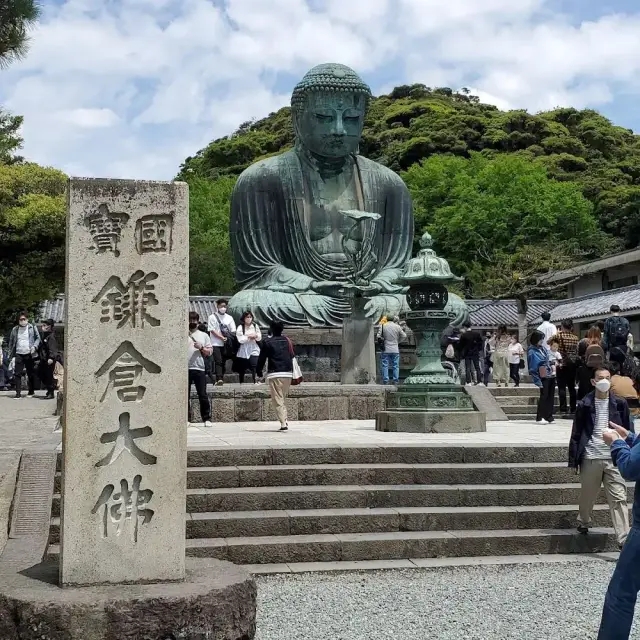https://www.dekitabi.com/itinerary/enoshima-kamakura-essential-tour
Japan, a country rich in history and culture, offers countless treasures for travelers seeking to immerse themselves in its traditional heritage. Among the most captivating destinations are Enoshima Shrine Hetsumiya, Enoshima Benzaiten Nakamise Street, Kotokuin, Hase-dera Temple, Tsurugaoka Hachimangu Shrine, and Komachi Street. Each location provides a unique glimpse into Japan’s past and spiritual life, making them must-visit spots for those exploring the country’s diverse cultural landscape.
Enoshima Shrine Hetsumiya

https://www.dekitabi.com/attraction/enoshima-shrine
Enoshima Shrine Hetsumiya is a significant spiritual site located on Enoshima Island in Kanagawa Prefecture. As part of the larger Enoshima Shrine complex, Hetsumiya serves as one of its three main shrines, dedicated to the goddess Benzaiten. This shrine is renowned for its serene atmosphere and picturesque setting, perched on a hill offering breathtaking views of Sagami Bay. The approach to the shrine, lined with lush greenery and ancient trees, sets a tranquil tone for visitors seeking spiritual solace.
The historical significance of Enoshima Shrine Hetsumiya is deeply rooted in Japanese mythology. According to legend, Benzaiten, the goddess of music, arts, and wisdom, chose Enoshima Island as her earthly abode. This connection makes the shrine a revered destination for worshippers and tourists alike. Visitors often come here to pray for success in their artistic endeavors and personal growth. The shrine’s architecture, characterized by traditional wooden structures and intricate carvings, provides a glimpse into Japan’s rich cultural heritage.
Enoshima Benzaiten Nakamise Street

https://www.dekitabi.com/attraction/enoshima-benzaiten-nakamise-dori
Adjacent to Enoshima Shrine Hetsumiya is Enoshima Benzaiten Nakamise Street, a vibrant shopping street brimming with local charm. This bustling thoroughfare is lined with shops and eateries offering an array of traditional Japanese goods and delicacies. As you stroll down Nakamise Street, you’ll encounter a delightful mix of souvenirs, including handcrafted trinkets, traditional sweets, and local specialties.
The street’s lively atmosphere is enhanced by its historic ambiance, with many of the buildings retaining their classic architectural style. Visitors can sample local treats such as shirasu (tiny sardines) and fresh seafood, while also exploring shops selling traditional crafts and souvenirs. The street is particularly popular among tourists for its charming and authentic representation of Japanese culture.
Kotokuin

https://www.dekitabi.com/attraction/kotokuin-temple
In nearby Kamakura, Kotokuin Temple, commonly known as the Great Buddha of Kamakura, stands as one of Japan’s most iconic landmarks. This historic temple is famous for its colossal bronze statue of Amida Buddha, which stands approximately 13.35 meters tall. The statue, completed in the 13th century, is a symbol of peace and tranquility, attracting visitors from around the world.
The temple grounds are equally impressive, featuring traditional Japanese garden landscapes and historical structures. Visitors can explore the temple’s serene surroundings and reflect on the spiritual significance of the Great Buddha. The combination of the statue’s grandeur and the temple’s tranquil environment offers a profound experience for those interested in Japanese Buddhism and history.
Hase-dera Temple

https://www.dekitabi.com/attraction/kamakura-hasedera
Just a short distance from Kotokuin is Hase-dera Temple, renowned for its beautiful gardens and impressive Buddhist sculptures. The temple, also known as Hase-dera Kannon Temple, is dedicated to the goddess Kannon, known for her compassion and mercy. The temple’s primary attraction is its large wooden statue of Kannon, which is one of the largest in Japan.
Hase-dera Temple’s lush gardens, including a delightful hydrangea garden that blooms in the summer, create a serene retreat for visitors. The temple’s observation deck offers panoramic views of Kamakura and the surrounding areas, providing a perfect spot for reflection and photography. The temple’s peaceful ambiance and historical significance make it a cherished destination for both spiritual seekers and history enthusiasts.
Tsurugaoka Hachimangu Shrine

https://www.dekitabi.com/attraction/tsurugaoka-hachimangu-kamakura
Located in Kamakura, Tsurugaoka Hachimangu Shrine is one of Japan’s most important Shinto shrines. Established in the 11th century, the shrine is dedicated to Hachiman, the Shinto god of war and the patron deity of the Minamoto clan. The shrine’s main hall, or honden, is surrounded by a large, scenic pond and beautiful gardens, offering visitors a tranquil escape from the bustling city.
Tsurugaoka Hachimangu Shrine is also known for its historical significance, having played a key role in the political and cultural history of Kamakura. The shrine’s grounds are adorned with traditional torii gates, stone lanterns, and vibrant seasonal decorations, creating a visually stunning environment. Festivals held at the shrine throughout the year, including the famous Yabusame horseback archery event, provide a unique opportunity to experience traditional Japanese culture in action.
Komachi Street

https://www.dekitabi.com/attraction/komachidori-street
Komachi Street in Kamakura is a bustling pedestrian street known for its vibrant shopping and dining scene. This lively area is lined with a diverse range of shops, from trendy boutiques to traditional craft stores. Visitors can explore a variety of local products, including handmade crafts, Japanese sweets, and fashion items.
The street’s atmosphere is a blend of old and new, with modern shops coexisting alongside traditional establishments. Komachi Street is also renowned for its excellent food offerings, including local specialties such as matcha (green tea) desserts and fresh seafood. The street’s lively ambiance and diverse shopping options make it a popular destination for tourists looking to experience the vibrant culture and culinary delights of Kamakura.
Conclusion
Exploring Enoshima Shrine Hetsumiya, Enoshima Benzaiten Nakamise Street, Kotokuin, Hase-dera Temple, Tsurugaoka Hachimangu Shrine, and Komachi Street provides a rich tapestry of Japan’s cultural and spiritual heritage. From the serene beauty of Enoshima Shrine Hetsumiya to the bustling charm of Komachi Street, each location offers a unique and immersive experience. Whether you are seeking spiritual reflection, historical insights, or a taste of traditional Japanese culture, these destinations promise a memorable journey through Japan’s rich and diverse heritage.


Leave a Reply